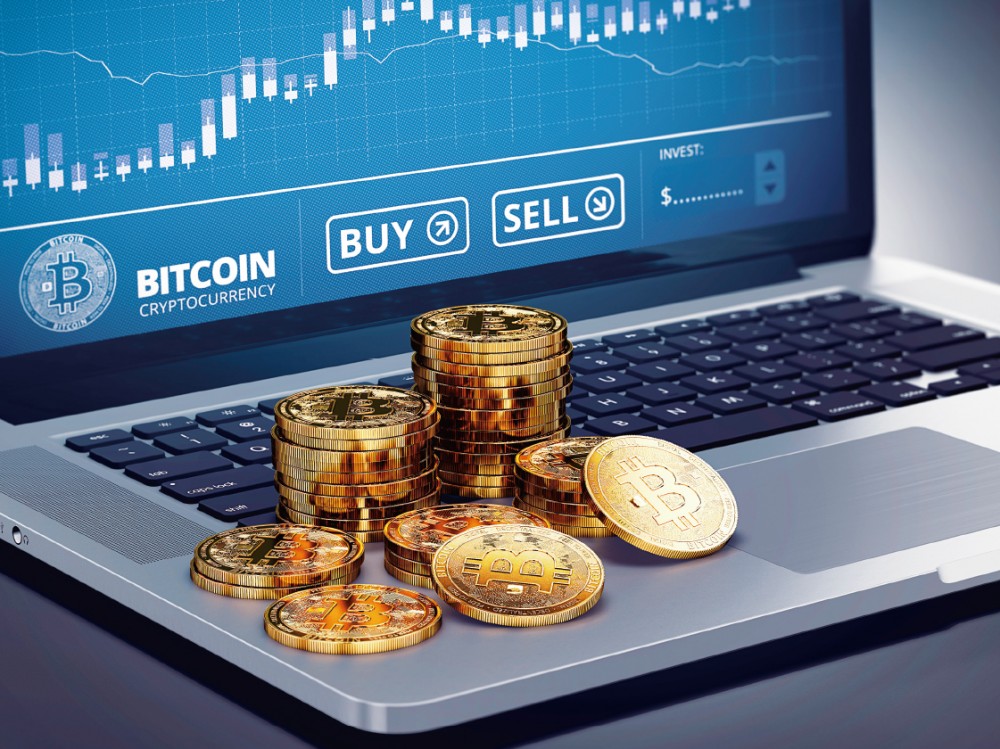TerraUSD (UST), the world’s third biggest stablecoin, veered wildly from its USD peg. The value of its sister cryptocurrency LUNA is now worth close to nothing. What exactly happened in this stablecoin meltdown? Does it show that strengthened regulation for stablecoins and cryptocurrencies must be in place?
Rex Wong: Market Urges to Strengthen Crypto Regulation Amidst Confidence Crisis Following Stablecoin Collapse

Blockchain platform Terra has rolled out two stablecoins, namely UST and its associated LUNA token. The value of one UST was pegged at approximately USD1 for a long time, making it the world’s third biggest stablecoin. While UST and LUNA are symbiotic, the price of LUNA is never stable. The algorithmic stablecoin is designed to work such that when one new UST is minted, LUNA that is worth USD1 is burned, and vice versa. From the investors’ perspective, when the price of UST1 is higher than USD1, then USD worth of LUNA can be bought to mint a new UST, and they could profit from arbitrage. Contrarily, when the price of UST1 falls below USD1, investors would purchase UST1 at a lower rate in exchange for USD1 worth of LUNA.
US monetary tightening resulted in crisis
 According to Rex Wong, Chairman of Hong Kong Blockchain Industry Association Chairman, the values of UST and LUNA lack a solid foundation as their previous price hikes were a result of pumping. The founder of Terra rolled out the Anchor protocol when the price of LUNA soared. Under the protocol, investors who deposit UST will receive 20% annualized yield. The scheme was sought after by many supporters. Right before the crash of UST, about 75% of all issued UST was deposited into Anchor. Many investors even borrowed to purchase and deposit UST to earn that yield.
According to Rex Wong, Chairman of Hong Kong Blockchain Industry Association Chairman, the values of UST and LUNA lack a solid foundation as their previous price hikes were a result of pumping. The founder of Terra rolled out the Anchor protocol when the price of LUNA soared. Under the protocol, investors who deposit UST will receive 20% annualized yield. The scheme was sought after by many supporters. Right before the crash of UST, about 75% of all issued UST was deposited into Anchor. Many investors even borrowed to purchase and deposit UST to earn that yield.
Wong pointed out both the stock market and the crypto market slumped simultaneously following the recent monetary tightening in the US. Added that the LUNA Foundation Guard (LFG) drained USD150 million worth of UST to raise more capital, the circulation of UST was significantly reduced. All these are the main causes of the LUNA currency crisis. “As certain investors dumped USD84 million worth of UST in May, the price of UST began to ‘depeg’ from the USD, resulting in a sell-off of UST by large positions and a constant fall in its price. At the same time, the price of the stablecoin’s symbiotic token LUNA fell from USD80 to only USD0.0002718 – or 99.9% - within three days, leaving LUNA to worth close to nothing.”
Cryptocurrencies must be regulated
Wong added that at present, most stablecoins are backed by physical assets such as the USD or bonds as reserve assets. Yet, the reserve for LUNA is bitcoin. “When the price of LUNA dropped, LFG began selling bitcoins massively, hoping it could stabilize the price of UST. However, as this coincided with the fall of the US stock market, bitcoin – whose recent trend was more or less similar to that of US stocks – is being sold in large quantities, leading to further price dip and worsened circumstances for the crypto market in general.”
Wong frankly commented that after such a heavy blow, investors’ general confidence on the crypto market would undoubtedly be smashed. One could foresee that unless there is a radical change in the investment pattern of stablecoins, investors can hardly be attracted to invest large sums in this segment again. “The crypto turmoil triggered by the collapse of stablecoins will once again draw concerns and demands for strengthening policy and regulation from the market.” Wong reminded investors that risk management is crucial for making any investment decision, and that no one should blindly follow suit, especially when the investment concerned is the high-risk cryptocurrency.
Hon Ng: The Risks and Opportunities of Crypto

Thousands of cryptos are now openly traded and circulated. Some investors are eager to invest in cryptos in view of their surprising volatility. According to Hon Ng, Binance General Counsel and Head of Regulatory and Public Policies, investors may stay unruffled in unstable circumstances if they have learned more about crypto while it is still early.
Rocketing prices caught world attention
 Bitcoin is undeniably the most well-known and the most widely used crypto at present. According to Ng, the value of Bitcoins has changed so much from its humble past after rounds of ups and downs. Once worth just enough for two pizzas, 10,000 Bitcoins can now convert to hundreds of millions of US dollars. Ng expects cryptos to grow even further with the rise of the metaverse because cryptos represented by Bitcoin share the same decentralized feature.
Bitcoin is undeniably the most well-known and the most widely used crypto at present. According to Ng, the value of Bitcoins has changed so much from its humble past after rounds of ups and downs. Once worth just enough for two pizzas, 10,000 Bitcoins can now convert to hundreds of millions of US dollars. Ng expects cryptos to grow even further with the rise of the metaverse because cryptos represented by Bitcoin share the same decentralized feature.
Some argue that Bitcoin is somehow associated with the emergence of non-fungible tokens (NFTs). With many celebrities now involved in the sale of encrypted collectibles, the relevant idea is being made more well-known. Ng pointed out that NFTs of the future will do much more than being art collectibles. They are expected to be used in many scenarios. More new asset types will be established going forward as the threshold for issuing NFTs lowers.
Challenges from the megatrend
On the other hand, outlaws are beginning to use cryptos for money laundering or to support terrorism. Therefore, many countries have banned crypto trading altogether. To prevent cryptos from becoming the core of criminal activities, crypto exchanges would conduct mandatory KYC processes and stop serving suspicious accounts or sanctioned locations. However, crypto exchanges may also suffer from losing large accounts and revenue when they roll out these measures. Ng regarded this as a real challenge faced by cryptos.
Ng believed that an even bigger challenge for crypto comes from the lack of regulation or backing by a centralized issuer. As a result, the market is highly susceptible to rumors, news or government actions. Crypto prices can rise or drop sharply within a short time. When an overseas platform closes down or stops running, investors may find it next to impossible to file a claim; they may also fail to receive any compensation through legal means.
Comprehensive regulation must come next
The recent crash of the crypto market has shattered investors with substantial loss. Investors cannot help but question whether cryptos can make a comeback. Ng pointed out that the situation has alerted the regulators of the US and European markets, who have now picked up their pace to establish or perfect relevant regulations.
Ng is optimistic about the prospects of cryptos in Hong Kong. As an international financial hub, Hong Kong is holding a leading position in crypto development. He stressed that Binance is the world’s largest crypto exchange in terms of trading volume, and it is committed to protect its users by continually upholding stringent agreements and through industry-leading technologies.
The above is an abstract of the online seminar “Five things you need to know about cryptocurrencies” co-organized by the InnoTech, Creativity and Culture Committee; the Commerce, Industry and Social Affairs Committee and the Young Executives' Committee of the Chamber.
Cryptos Cannot Be Ignored
 Cryptos is a medium for exchange in the new era. Riding on blockchain technologies, the security of crypto transactions is ensured and minting of new units is controlled. The first crypto, Bitcoin, came into existence in 2009. From the initial conversion rate of 400 Bitcoins to one US dollar, the value of one Bitcoin once soared to one Bitcoin to more than USD60,000 within 10 years’ time. Different cryptos mushroomed in the market over the past decade, with thousands of them already available in the market. There are Ether, Ripple, and Litecoin, to name just a few.
Cryptos is a medium for exchange in the new era. Riding on blockchain technologies, the security of crypto transactions is ensured and minting of new units is controlled. The first crypto, Bitcoin, came into existence in 2009. From the initial conversion rate of 400 Bitcoins to one US dollar, the value of one Bitcoin once soared to one Bitcoin to more than USD60,000 within 10 years’ time. Different cryptos mushroomed in the market over the past decade, with thousands of them already available in the market. There are Ether, Ripple, and Litecoin, to name just a few.
Cryptos do not exist in the form of physical objects. You cannot hold them in your hand, nor are they backed by any bank, government or issuer. In Hong Kong, Bitcoin and other cryptos are regarded as virtual commodities rather than legal tender, meaning they are not for everyday use.




